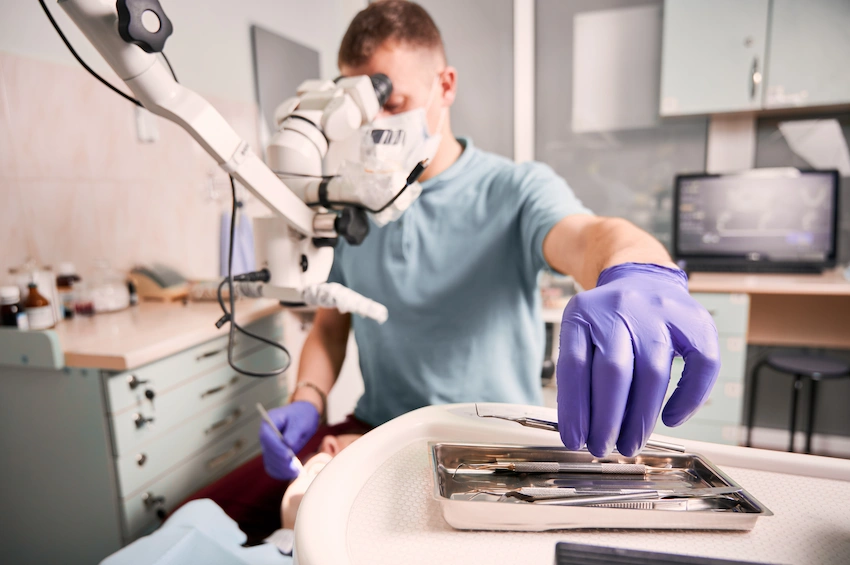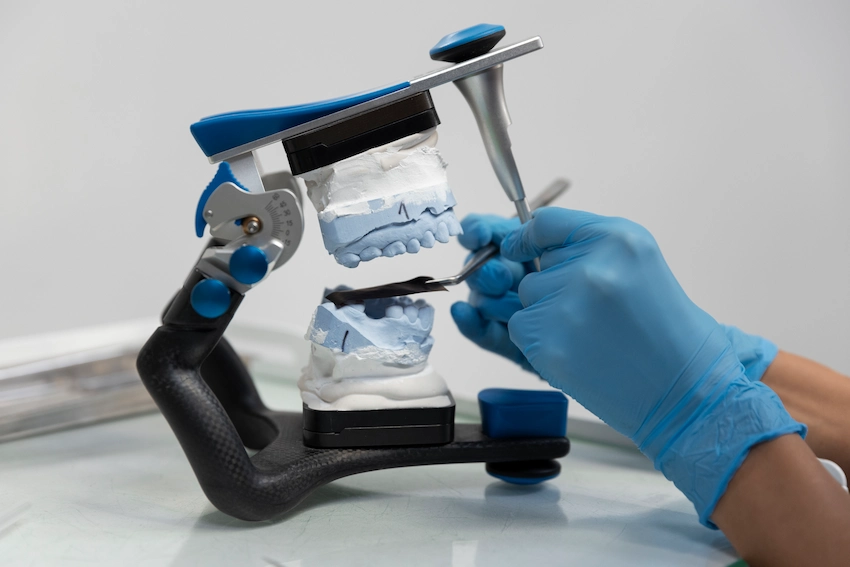🦷 What is Root Canal Treatment Under the Microscope?
What is Root Canal Treatment Under the Microscope?
When root canal treatment is mentioned most times, people tend to associate it with a long and painful experience with the dentist. However, by 2020, the notion of a root canal as a nightmare would be considered old-fashioned, especially if you are going to Lema Dental Clinic in Istanbul, where the implementation of the latest technology has brought about a significant change in this therapy. One of the most revolutionary changes is a root canal operation with the help of a microscope or microendodontics.
Basically, this method equips the dentist with a vision beyond human. The magnification of a dental microscope is up to 25 times, and every very small detail is put forth that could be found inside the tooth, which is invisible to the naked eye. It is a matter of great importance because the smallest left area can bring back the infection or failure. After microendodontics, dentists are able to perform the cleaning, shaping, and filling of the tooth in a way that is the most accurate, and hence the tooth will not only save its function and longevity but also its aesthetics.
The truth is that a lot of people don’t realize this fact, that even if the natural teeth look good from the outside, they may not be healthy inside. Fractures, concealed caries, and severe infection are potential destroyers of the smile, gradually. Therefore, apart from microendodontics, veneers, implants, and a Hollywood smile complete makeover are also among the most preferred treatments by people who care about the health and the beauty of their oral cavity.
Why is Root Canal Treatment Under a Microscope (Microendodontics) Used?

Not only is microendodontics a high-end tool for clinicians, but it is also the mainstay in patients’ dental care when the alternative is tooth extraction. Due to the microscope, the dentists are now able to:
- Identify those hidden canals that may not be visible using standard procedures.
- Discover the very small fractures, which are a potential source of infection, at a later time.
- Ensure the bacteria removal process is thorough, reaching deep inside the tooth.
If the precision is not at this level, the tissue infected can be left behind, which means that there will be pain, swelling, and probably the tooth will become teabagged at a later stage. At Lema Dental Clinic, the use of the microscope in complex root canal treatment is a routine procedure, more so for the patients who not only wish their smile to be healthy but also to have a nice aesthetic.
It is similar to repairing a fragile watch. If you are doing the job without magnification, you may overlook the tiny gears or screws. However, when you have magnification, every piece is there for you to see, and you can make the repair as perfect as possible.
Advantages of Root Canal Treatment Under a Microscope

The advantages are not limited to just “fixing a tooth.” These are the reasons why patients opt for microendodontics:
1. Higher Success Rate
The dentist, who can see everything clearly, can thoroughly clean each canal, thus lowering the probability of reinfection. This makes the treatment more durable over time.
2. Better Comfort During Treatment
The accuracy of the microscope means that the number of errors is minimal, less unnecessary drilling is done, and the patient gets a smoother overall process. That’s something that means a lot to patients who are anxious in the dental chair.
3. Perfect for Cosmetic Planning
In case you are going to have veneers, implants, or a Hollywood Smile in the future, microendodontics is the procedure that initially makes your natural teeth and gums strong — in this way, the ideal foundation for aesthetic work is created.
At Lema Dental Clinic, it is not just about the teeth that need to be fixed. It is about ensuring that every treatment you undergo supports your smile goals.
How is Root Canal Treatment Under a Microscope (Microendodontics) Performed?

First, the dentist numbs the tooth so that the patient does not feel any pain. After this, he uses the microscope to make a very exact opening to have access to the pulp chamber, which is the place where the infection or damaged tissue is.
There, the dentist will remove the pulp with extremely small stainless steel hand files. To open the root canals, they will also use stainless steel files that are larger in diameter and remove the pulp tissue. The dentist will use a syringe to flush the canal with water and a disinfectant to kill bacteria. The water will also wash away different little bits of the tooth. As the microscope will make everything bigger, even the tiny and curved canals will be thoroughly cleaned. After finishing the cleaning process, the root canals are packed with a biocompatible material to avoid getting infected again.
The method of restoring the tooth with a crown, veneer, or composite filling depends on the damage to the tooth. At Lema Dental Clinic, the cosmetic design is part of the process, so the tooth that has been treated does not stand out from the rest of your smile.
Is Microendodontics Painless?

The response from most patients is that the procedure is almost painless. The combination of modern anesthesia, the use of advanced instruments, and the precision of the microscope results in very little or no discomfort for you.
Several patients who felt anxious before the treatment say that once they had undergone the treatment and realized it was very quick and smooth, they no longer felt that way. At Lema Dental Clinic, the main aspect is the setting of a calm and luxurious atmosphere, which makes even very complicated dental work turn into a stress-free one.
What is the Difference Between Microendodontics and Root Canal Treatment?
Traditionally, a root canal is mainly based on the eye of the dentist and basic magnification tools such as loupes. Hence, very small canals, which might be difficult even for magnification to be found, and small cracks are hard to uncover.
On the other hand, microendodontics utilizes a high-tech dental microscope that offers a much clearer and more detailed image. This extra detail means thorough cleaning, sealing, and long-term outcomes. In other words, microendodontics is like going from a flip phone to the latest smartphone — once you have the experience, you cannot go back.
FAQ: Root Canal Treatment Under the Microscope
Basically, microendodontics is a method that can be successfully used in the treatment of complicated canal shapes of the teeth, in case of failure of the treatments that were previously done, and in difficult parts of the tooth for cracks and infections.
It is almost possible to use microendodontics in any tooth, and thus the most common examples are molars and premolars that have more than one and/or curved canal.
Keep the dental care tips of your dentist and refrain from chewing hard food with the treated tooth until it is fully restored.
Generally, two or one appointments only are enough, which depends on the condition of the infection and the complexity of the tooth.
A root canal with good quality and proper maintenance can surely last a lifetime.




